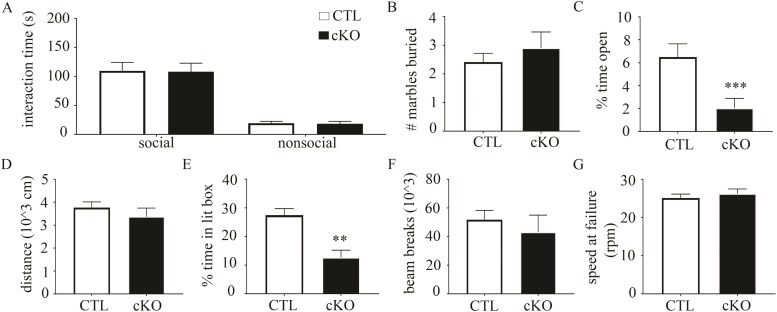Figure 3.
β-cat cKOs exhibit increased anxiety, but no autism-like behaviors or motor impairments. (A) In the three-chambered social interaction assay, β-cat cKOs and wild-type littermates showed a similar preference for interacting with a caged, novel mouse over a caged, novel object. (B)β-cat cKOs and wild-type littermates buried a similar number of marbles in the marble burying task, suggesting no aberrant repetitive behaviors. (C) Compared to littermate controls, β-cat cKOs exhibit increased anxiety, as they spend less time in the center during the open field test. (D)β-cat cKOs have normal locomotion, based on the distance traveled in the open field test. (E) In the light/dark box assay, β-cat cKOs spend less time in the lit portion of the chamber, further suggesting increased anxiety. (F) Monitoring home cage behavior shows similar levels of motor activity between β-cat cKOs and littermate controls. (G)β-cat cKOs display normal motor coordination in the rotorod test.

